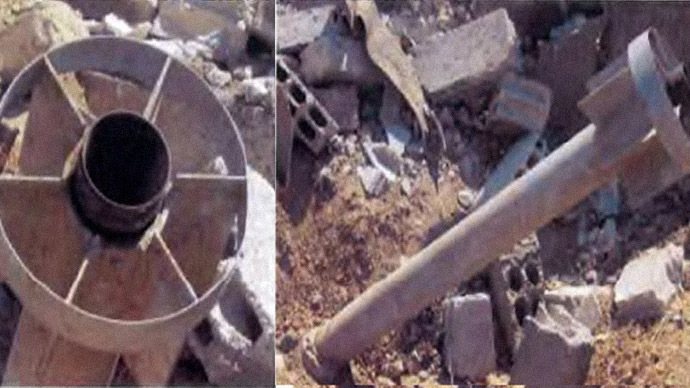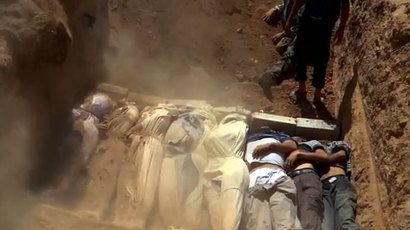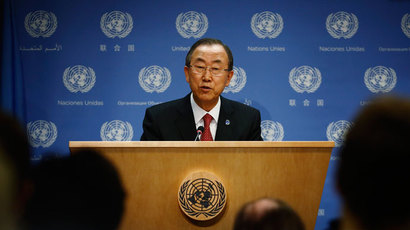Warheads used in Syria chemical attack ‘could be original or improvised’ – UN

The UN investigation concluded chemical weapons were used on a relatively large scale in the Ghouta area of Damascus on August 21. But, the report is unclear whether the weapons used belonged to Assad’s or rebel forces.
The UN mission concluded that there was “clear and convincing evidence that surface-to-surface rockets containing the nerve agent sarin were used in the Ein Tarma, Moadamiyah and Zamalka [neighborhoods] in the Ghouta area of Damascus.”
At the same time, the report remains unclear in terms of whom those surface-to-surface rockets belonged to – rebels or government forces.
The 38-page report was compiled by a UN expert team, which inspected Damascus at the end of last month, and collected over 30 samples from victims and the environment.
The UN team noted that they had limited time to conduct the investigation and cautions that evidence might have been “moved” or even “manipulated”, with many others visiting the sites before and during the investigation

UN was able to use ‘two out of five sites’ for trajectory evidence
Of the five impact sites investigated by the UN, only two were able to provide the “likely trajectories” of the rockets.
Evidence recovered from the first site called Moadamiyah showed that the munitions used “matches one of the variants of the [Soviet] M14 artillery rocket”. The UN noted that the warhead (not seen at the impact site) could have been “original or improvised.”
An impact point at the site was identified as a crater and “the intact rocket motor” was found coincident to it, along with small metal fragments “scattered outside of the crater”.
"There was no indication of damage around the crater having been caused by a blast or explosives,” the report stated, adding that this meant that the warhead was not at the scene of the final impact.
The report explains: “The rocket initially impacted the corner of the second floor of an adjacent apartment building to the east, with either warhead functioning or shearing off from the body … and the motor section having sufficient kinetic energy to continue along its path to its terminal location.”
The weapon was described in the report as having “light gray paint”, black numbers “97-179” on the side, and Cyrillic engravings on the bottom ring of the engine.
“The engine had 10 jet nozzles ordered in a circle at the end of the rocket with a metal electrical contact plate in the middle.”

Evidence recovered from the fourth site identified as Ein Tarma revealed that the weapon used matched a 330 mm caliber, artillery rocket, which had features “consisted with that of an unguided rocket.”
The UN experts suggested that based on the “orientation and impact craters” and other damage in the area, the rockets were fired from an unspecified area to the northwest.
The rocket engine consisted of “six stabilizer fins”, which were “equally arranged in a circle and stabilized with a metal ring.” One rocket had a number 153 sprayed in the middle of an engine tube.
The engine tube attached to the warhead had a “front metal plate with a fuse thread in the center.”
The rocket warhead appeared to have gone off prior to impacting the building, releasing its contents before going through the structure to its final location.
International reaction to the report has been mixed with Russia’s UN representative says the newly unveiled report on the chemical attack of August 21 offers no “bulletproof data or conclusions” on who ordered it.
In contrast, the US and UK say the study confirms the regime was behind the attack.















